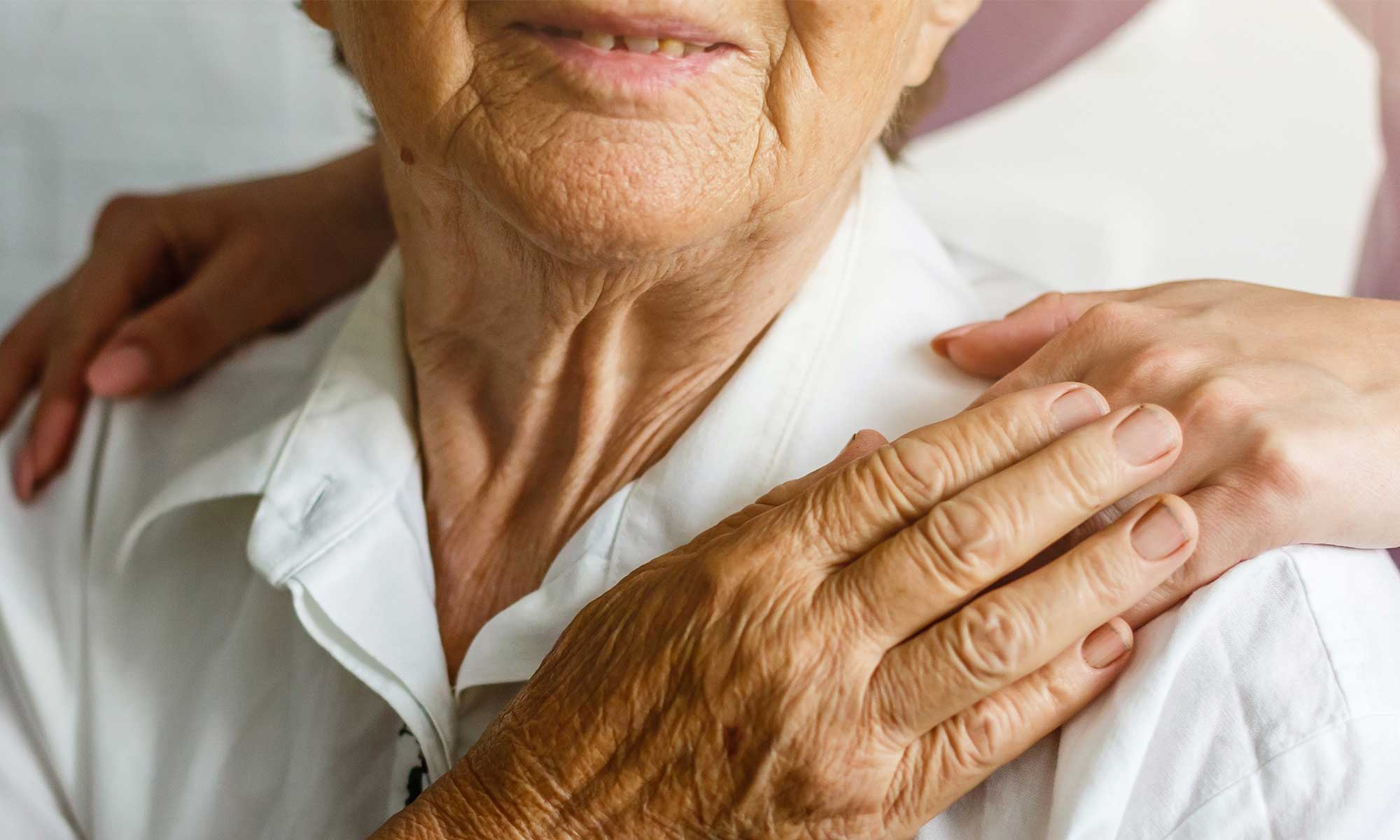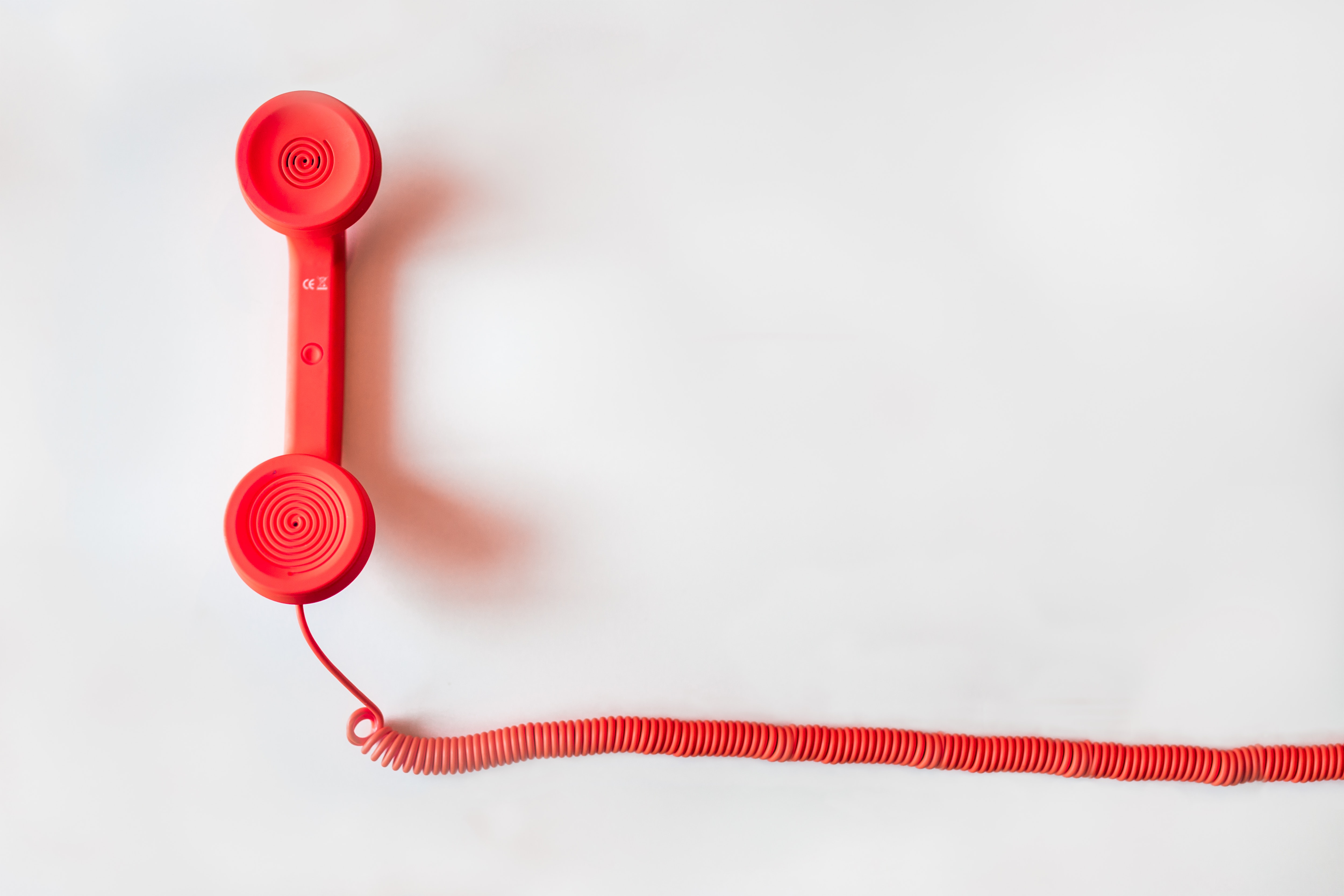Module 8
Advance Planning and Self-Management

OVERVIEW
Advance care planning is an act of independence and self-management that communicates your specific values and wishes regarding your personal care and financial affairs when you are no longer able to speak or advocate for yourself.
By the end of this module, you will have met the following goals:
Goal 1: Learn more about how to use your Action Plan for disease self-management
Goal 2: Learn about advance care planning and advance directives
Goal 3: Exercise with us three times this week, increase your strength training to perhaps reach the goal of 15 repetitions. Continue your home walking program and maintain this level for optimal health, 5 to 7 days per week.
Goal 4: Take steps to maintain regular exercise.
Goal 5: Take action to select a substitute decision maker and discuss your advance care plans with them. Locate provincial or territorial resources for advance care planning and advance directives.
You have the opportunity now to make decisions regarding your end-of-life care that reflect your wishes and your spirit. This is a gift to yourself and to those who care about you.
Take some time to talk to supportive friends and/or family about your advance care plans and advance directives. Also celebrate with them. You have been successful in completing this program and are better equipped to manage your lung disease, as well as your overall health and wellness.
General information
Self-management is the initiative you take in caring for your health and well-being. It involves managing the symptoms of your disease by using the Action Plan that you have developed with your healthcare team. It involves the planning that goes into improving your quality of life with continued exercise, vaccination, smoking cessation, nutrition and emotional self-awareness. It also involves advanced care planning, so that your care needs and personal preferences are met as your health declines and you are no longer able to speak for yourself.
Completing your advance directives includes identifying a power of attorney (POA) for personal care, a POA for property, and ensuring your will is up to date. Doing so ensures that your decisions are respected when you can no longer manage your affairs while alive, and after death.
Making these decisions now is an act of independence, self-care and self-management. It clarifies your wishes, which helps to reduce the stress for yourself and your loved ones. Making these decisions provides you with a sense of peace that you have participated in your final decisions.
Planning for your health
By completing your Action Plan (COPD, Asthma, or Pulmonary Fibrosis) you are entering into a contract of shared decision making with your healthcare team based on your awareness of your normal symptoms and the management of your flare-up symptoms that lead to an exacerbation.
- Don’t wait more than 48 hours after the start of flare-up symptoms to take your antibiotic and/or prednisone medications. A prior discussion with your provider or pharmacist is required.
- Follow up with your healthcare provider within 48 hours of starting flare-up medications.
- When you are well, be as active as possible. Weakness leads to more and worsening flare-ups.
- Stay up to date with your vaccinations for influenza (yearly), pneumonia (variably), COVID-19 (as recommended) and RSV (as recommended).

- Find something good about every day.
- Quit smoking
Not all shortness of breath is related to flare-ups. When in doubt, see your provider as soon as possible because anxiety, pneumonia and heart disease share this common symptom.
Planning for your well-being
As your disease progresses, you may need additional support. When meals, personal care, home upkeep and transportation become challenging, reach out to rural, regional, or provincial/territorial resources for help. Your healthcare team can direct you to services in your community. Community support services found across Canada can ease the burden for you and your caregiver.
What is home care?
Home and community care services allow people to receive some medical services and social support in the home. These services support independence in the home for as long as possible. Needs-based home care services are funded by provincial, territorial and some municipal governments. The federal government provides home care services to First Nations on reserve, Inuit in designated communities, members of the armed forces and the RCMP, eligible veterans, and inmates serving time in federal prisons.
The goals of home and community care are to:
- Maintain and improve quality of life
- Assist in maintaining independence
- Support family/informal care givers who are caring for the ill
- Support persons needing treatment, rehabilitation or palliative care
Talk with your healthcare provider or team member in order to receive a referral for home care services. Home care services may include nursing, personal care, physiotherapy, occupational therapy, speech therapy, social work, dietitian services, homemaking services or respite care.
Find out more about home care in your province or territory:
- Alberta
- British Columbia
- Manitoba
- Newfoundland and Labrador
- New Brunswick
- Northwest Territories
- Nova Scotia
- Nunavut
- Ontario
- Prince Edward Island
- Quebec
- Saskatchewan
- Yukon
What are palliative and hospice care?
Both palliative care and hospice care support people who are living with a life limiting disease. The care approach of palliative and hospice care includes pain management and symptom management, as well as social, psychological, emotional and spiritual support for the you and your caregiver. These care and support services are provided by an interdisciplinary team of nurses, therapists, social workers, physicians, clergy, personal support workers and volunteers.
Palliative care is generally received as your disease advances. Palliative care helps you to maintain independence, dignity, comfort and the alleviation of distress. It offers access to information, as well as support in care decisions that will affect the quality end-of-life care, thereby supporting you and your family/caregiver.
Hospice care is a special type of palliative care reserved for the final stage of life. It provides a holistic approach to end-of-life care with the focus on comfort and dignity. It not only supports physical, emotional and spiritual comfort, but also provides you and your family/caregiver with an understanding of what to expect, as fears and hopes are discussed on an individual basis. Hospice care can be received in the home, in a special unit of a hospital or in a long-term care facility focusing on comfort care.
Accessing palliative care services
- Provincial and territorial contact information for end-of-life care services (Government of Canada)
- How to access palliative care in Canada (Canadian Pulmonary Fibrosis Foundation)
Advanced directives
You have the opportunity now to make decisions regarding your end-of-life care that reflect your wishes and your spirit. This is a gift to yourself and to those who care about you.
Advanced directives
Advanced directives are directions given about the care that you would like to receive and who you would like to make decisions for you if you can no longer make decisions yourself. Advanced directives are sometimes referred to as “living wills”. Types of advanced directives and the terms used to describe them may vary between provinces and territories.
- It is important to consider and state your desires for resuscitation (DNR), terminating advanced medical assistance, and financial oversight, as well as your personal care preferences and any strong wishes regarding your religious convictions or cultural beliefs.
Power of attorney
Power of attorney (POA) is a legal document that gives someone you trust the ability to make decisions on your behalf. The person designated as your POA can be a spouse/partner or other family member, a friend or a lawyer or trust company. A power of attorney is only valid if you are mentally capable at the time you sign it. Each province and territory has its own laws relating to powers of attorney.
Last will and testament
A will is a written, legal document, signed by you. The signing of this document must be witnessed by two individuals who are not beneficiaries or receivers of your properties or finances. A will directs how your properties and finances should be distributed or dissolved after your death.
Consider:
- Who will receive your goods and possessions, particularly if there are special items?
- How do you want your assets distributed?
- Who will care for any dependents?
- Is there is a certain minimum age for receiving money? If so, the money should be placed in trust.
A clear outline of your wishes, set out in a will, can help avoid stress and disputes following your death.
Medical Assistance in Dying
What is Medical Assistance in Dying (MAiD)?
In 2021 the Government of Canada updated the eligibility criteria for MAiD. All of the following conditions must be met:
- You must be eligible for federal government, province or territory funded health services.
- You must be 18 years of age or older and mentally competent.
- You must have a grievous and irremediable medical condition.
- You must make a voluntary request for MAiD that is not a result of outside influence.
- You must give informed consent to receive MAiD.
To be considered as having a "grievous and irremediable medical condition", you must meet all of the following criteria.
- You must have a serious illness, disease or disability.
- You must be in an advanced state of decline that cannot be reversed.
- You must be experiencing unbearable physical or mental suffering from your illness, disease, disability or state of decline that cannot be relieved under conditions that you consider acceptable.
You do not need to have a fatal or terminal condition to be eligible for medical assistance in dying.
If you have a mental illness along with other medical conditions, you may be eligible for medical assistance in dying.
Eligibility is always assessed on an individual basis and takes all relevant circumstances into account. However, you must meet all the criteria to be eligible.
Visit the Government of Canada's site for more information on MAiD.
You have the opportunity now to make decisions regarding your end-of-life care that reflect your wishes and your spirit. This is a gift to yourself and to those who care about you.
EXERCISE
This is the week to increase your strength training intensity.
Your self-management steps to success
-
Use your pulse oximeter to check your oxygen saturation and heart rate. If they are normal for you, plan to exercise with us.
-
Are you assessing your respiratory symptoms daily? Do you know how to use your disease Action Plan if your symptoms have increased for two or more days?
-
Have you taken your long-acting controller medications, always at the same time?
-
You know that pursed-lip breathing is an effective way to relieve shortness of breath. Does this provide you with relief throughout the day?
-
You know if you need your quick-acting inhaler 15-20 minutes before exercise.
-
If you use oxygen, set the liter flow correctly for exercise.
-
You are eating well and drinking enough water? This helps your energy level, strength and clarity.
-
You pace yourself and respect your limitations. Be confident saying “no” “not now” or “not today”.
-
You have planned for future exercise, future health, future assistance in the home, and future decision towards end-of-life wishes. You have accomplished so much and are in a great position to contribute to the management of your disease with your healthcare team!
Method for exercise progression
Add 1 or 2 repetitions this week to your strength exercise. The max number of reps is 15.
If you were doing 15 repetitions, increase the amount of weight you are using. Add 0.5 – 1.0 kg for strength exercises. Begin with 8 reps of the new weight.
Gradually increase how long you walk, cycle or swim. Below is a guide to help you increase your walking time.
Home Walking Program
Week 1
5 minutes, 5 times per day
Weeks 2 & 3
10 minutes, 3 times per day
Weeks 4 & 5
15 minutes, 2 times per day
Week 6
20 minutes, 1 time per day
Week 7
25 minutes, 1 time per day
Week 8
30 minutes, 1 time per day
Relaxation, Meditation and Better Breathing
Reinforcing relaxation and diaphragmatic breathing.

Youtube supports many free Mindful Meditation and Better Breathing videos to promote effective breathing techniques, as well as mood, motivation, relaxation, stability, clarity and sleep enhancement. The Canadian Lung Association does not endorse the use of any particular or specific website or channel for meditation and relaxation. Sites listed are suggestions only.
TAKE ACTION
Review Your Action Plan
Take action to feel confident in following your COPD, Asthma, or Pulmonary Fibrosis Action Plan.
Talk with your respirologist about personalizing your Action Plan for your Pulmonary Fibrosis flare-up and optimal disease maintenance.
Talk with a Certified Respiratory Educator if you need help with accessing or understanding your Action Plan.
Advance Care Planning and Advanced Directives
Advance Care Planning
Advance Care Planning is a process not just a document. Download this form to help record your plan.
Advance Directives
Talk with a legal representative about your advanced directives. Doing this removes any words that might leave room for interpretation, causing decision making to be confusing and stressful. Make your wishes as clear as possible and let your loved ones know where to find your documents. Tell your healthcare provider about your substitute decision maker as well as your end-of-life preferences.
- Power of Attorney for Personal Care
- Power of Attorney for Property
- Last Will and Testament
For more specific information on palliative care, province and territory based advance directives and care planning, visit the End-of-Life Law and Policy in Canada website.
Breathe Better with the Respiratory Care Program
Sun Life and Online Pharmacy, provided by Pillway*, have partnered to offer you and your dependents the Respiratory Care Program. You'll receive 1-on-1 support to help you get back to doing the things you love while breathing easier. The program is available for people living with asthma and chronic obstructive pulmonary disease (COPD), and at no cost.
Read more about the Respiratory Care Program and our collaboration with Sun Life.
Make life more convenient with Online Pharmacy
Online Pharmacy, provided by Pillway*, is an online pharmacy that makes life more convenient by changing the way you get your medications. Offering fast and free delivery, pharmacist support and medication management.
Read more about Online Pharmacy and our collaboration with Sun Life.
*SHG Pharmacy Inc. and SHG West Pharmacy Inc., doing business as Pillway pharmacies, are partially owned by Simpill Health Group Inc. For your information, and as a point of disclosure, Sun Life Assurance Company of Canada has partial ownership in Simpill Health Group Inc.
Programs not available in Quebec
FEEDBACK
Tell us what you think
Modules
Introduction · Module 1 · Module 2 · Module 3 · Module 4
Module 5 · Module 6 · Module 7 · Module 8 · Conclusion

Speak to a certified respiratory educator
Call our Health Information Line at 1-866-717-2673 to speak to a certified respiratory educator. You can also email info@lung.ca.
BreatheSTRONG Program: Medical Disclaimer
Before you begin the BreatheSTRONG program, please read and agree to the medical disclaimer.
Medical Advice Disclaimer, Disclaimer of Warranty and Limitation of Liability
Please read this document carefully. The Canadian Lung Association (CLA) strongly recommends that you consult your physician or other qualified healthcare provider before choosing to take part in BreatheSTRONG. You acknowledge that CLA offers no medical assessment, diagnosis, or treatment, and that CLA makes no determination as to whether or not you are physically fit to participate in this program. This program is intended for Canadians living with chronic lung disease, be it obstructive or restrictive in nature. This program is not supervised and therefore not intended for Canadians who are awaiting lung transplant, lung volume reduction surgery or those who have pulmonary hypertension. Certain pre-existing non-respiratory conditions may also exclude you from participating in the exercise portion of this program.
THERE ARE POTENTIAL RISKS INHERENT in your participation in BreatheSTRONG, including, without limitation, worsening of your existing symptoms, an increased load on the heart, episodes of light headedness, fainting, dizziness, pain, chest discomfort, shortness of breath and bone and muscular injury. If you experience faintness, dizziness, pain, or unmanageable shortness of breath at any time while participating in exercise program, you should stop immediately.
CLA and BreatheSTRONG cannot respond to medical emergencies. If you think you have a medical emergency, call 911 immediately.
CLA assumes no liability or responsibility for the use of any information provided by BreatheSTRONG, or for your reliance on this information in place of specific medical advice from a qualified healthcare provider. As is, the health information content provided in this program is current, reviewed and approved by qualified healthcare professionals. To the maximum extent permitted by applicable law, CLA disclaims all liability for any errors or other inaccuracies in the information provided. In no event shall CLA be liable for damages of any kind, including but not limited to direct, indirect, special, consequential, or other monetary damages in connection with your use of or reliance upon information provided by BreatheSTRONG.
By following this program, you acknowledge that you have read, understand and agree to abide by the above Medical Advice Disclaimer, and Disclaimer of Warranty and Limitation of Liability.
